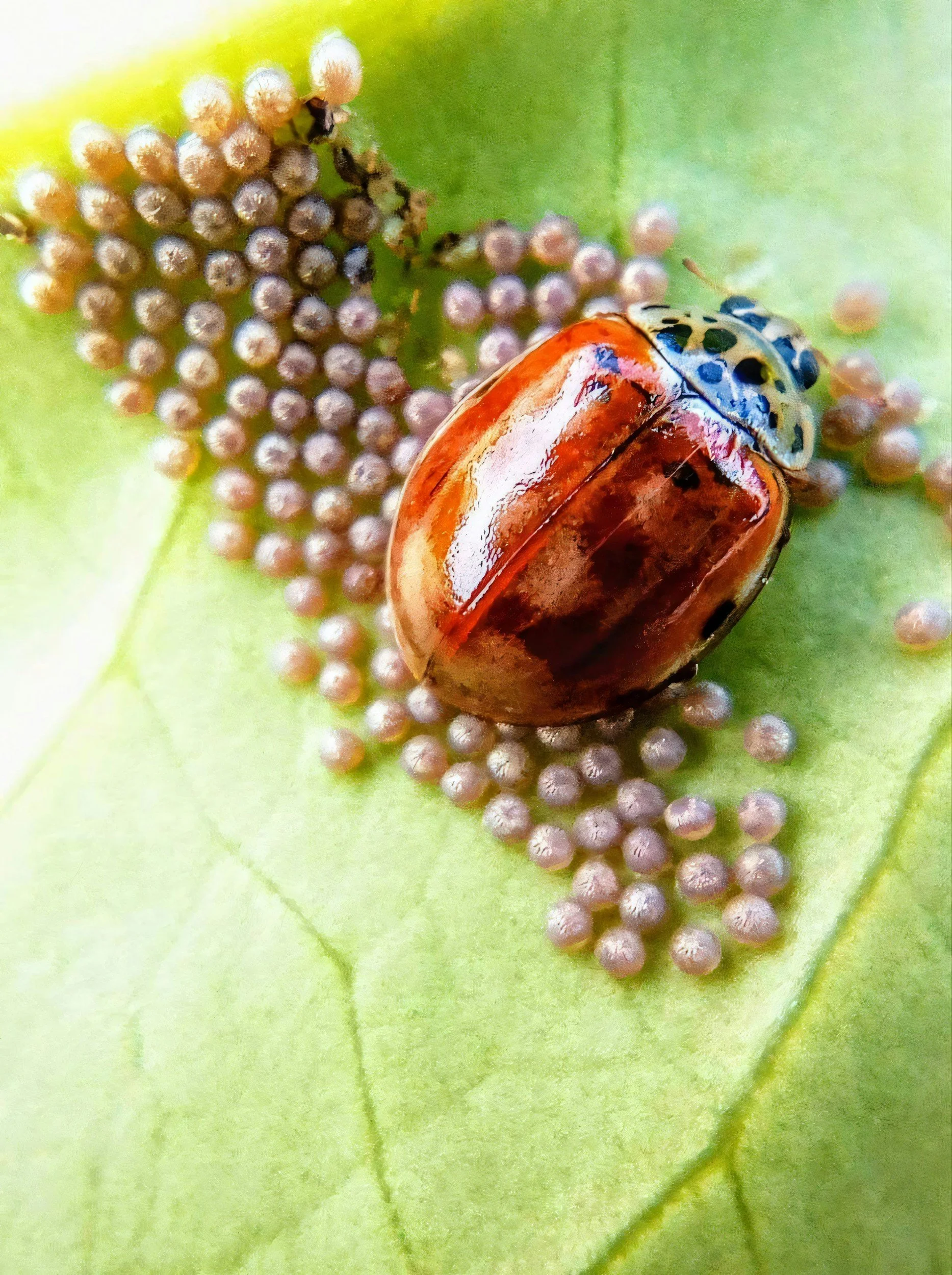trans-species design
Creating for the Interconnectedness of All Life
Trans-species design is an exciting, progressive movement in design that asks us to rethink our anthropocentric (human-centered) approach and embrace the idea that the built environment—products, spaces, and systems—should enable the flourishing of all living beings, not just humans. As the climate and biodiversity crises intensify, designers are reimagining their ethical responsibilities: not only regenerating and restoring environments, but also deliberately designing for the well-being of plants, animals, fungi, and microbes in tandem with humans.
Read more:
Theory and Development
Trans-species design is often seen in forward-thinking research centers and architectural firms exploring buildings, landscapes, and systems that support non-human life. As highlighted by projects at the University of Oregon and at the Venice Biennale, trans-species design ties together transenvironmental and generational thinking, reimagining the designer’s role as a creative partner with nature.
Real-World Examples
Bees as tenants: Some architects design building facades specifically to provide habitat for endangered pollinators, like bumblebees.
Vertical Forests in Milan: These iconic residential towers incorporate thousands of trees and shrubs, supporting birds and insects alongside humans.
The High Line, NYC: A reclaimed rail line turned park, intentionally designed for pollinators, birds, and diverse plant species as well as urban visitors.
Pollinator Pathmaker: An art and landscape project that uses algorithms to prioritize pollinator needs over conventional human aesthetics.
Transspecies Rosette: Architectural details supporting fungi and microbial communities as a living part of city life.
Dive deeper:
Why It Matters
Trans-species design isn’t just about wild new concepts or radical aesthetics. It’s a philosophy of cohabitation, inclusion, and ethical stewardship, urging us to see beyond “user-as-human” and appreciate the shared spaces and resources we hold in common with other living beings. Designers must now ask: What does it mean to nurture habitats, systems, and futures where all species can survive well—especially in the face of accelerating environmental change?
explore further:
Foreground’s essay on trans-species health: link
Yale panel: link
References
College of Design + Transpecies Design—University of Oregon design.uoregon
Transpecies Design: Design for a Posthumanist World—Routledge. routledge
Beatriz Colomina—Whitney Humanities Center—Yale University whc.yale
How the built environment could help all species flourish—OPB opb
Design Museum curators pick five works from More Than Human—Dezeen dezeen
Transpecies design projects featured in Venice Biennale—University of Oregon News
Trans-species health: An aesthetic responsibility—Foreground foreground
10 Unmissable Highlights from More than Human—Design Museum designmuseum
Trans-species design, while inspiring and forward-thinking, comes with significant risks and the potential for unintended consequences—especially because intervening in complex ecosystems and interspecies relationships can have unpredictable effects. Here are some of the core concerns:
Risks and Unintended Consequences
Ecological Disruption: Even with good intentions, introducing new habitats, species-supporting infrastructure, or technological interventions can disrupt existing ecological balances. For example, a design meant to help pollinators could inadvertently favor one species over others, displace native populations, or introduce pests and diseases.
Unanticipated Harm: Designing with or for non-human species can lead to outcomes that are not foreseen by humans, such as supporting invasive species, spreading pathogens, or creating dependencies that backfire if the artificially designed support systems fail.
Ethical Dilemmas: Trans-species design may unintentionally cause suffering or exploitation if not rigorously evaluated for welfare impacts and species integrity. Moral questions arise about interfering with the natural evolution, autonomy, and well-being of nonhuman life.
Feedback Loops & Systemic Complexity: Changes made in one part of an ecosystem can reverberate unexpectedly, sometimes worsening the problems designers aim to solve. As in conservation practice, well-intended actions can set off unintended feedbacks leading to poor outcomes.
Cultural and Social Risks: There can also be unexpected impacts on local communities, economies, and the perceived value or role of specific species in traditional knowledge systems.
How Do Designers Minimize These Risks?
Thorough Impact Assessment: Designers use environmental impact assessments, ecological modeling, and ongoing monitoring to predict and track consequences before, during, and after project implementation.
Multispecies Stakeholder Engagement: The process includes consulting with ecologists, biologists, ethicists, and affected communities—broadening research well beyond standard design user-testing.
Adaptive Management: Good trans-species projects are never “set and forget.” They plan for adaptation, corrective action, and the possibility that—even with best efforts—interventions require alteration or reversal if harmful effects emerge.
Ethical Guidelines & Precautions: There is an emphasis on following ethical frameworks, like the “Three Rs” in animal research—Reduction, Refinement, and Replacement—and considering the intrinsic value of nonhuman beings.
Learning from Past Failures: Applied design draws lessons from conservation, agriculture, and technology (including genetic engineering) to recognize that new approaches often bring unknown unknowns requiring humility and caution.
more harm than good?
Trans-species design is about participation and mutual flourishing across species boundaries, but nature is complex and not fully understood; there’s always a risk of doing more harm than good. Responsible designers proactively engage with this uncertainty, continuously monitor outcomes, consult diverse expertise, and put in place mechanisms to monitor, measure, adjust, and reverse wherever possible.
References:
How the built environment could help all species flourish—OPB opb
Unintended consequences in environmental interventions—BMJ Global Health bmj
oreground: Trans-species health and design responsibilities foreground
Unintended environmental consequences—Sustainability Directory pollution.sustainability-directory
Ethical issues in animal and ecological engineering—PMC pmc.ncbi.nlm.nih
[Tandfonline: Consequences of genetic modification tandfonline
Oxford Academic: Selection and unintended mutations academic.oup
Wiley: Feedbacks and conservation design conbio.onlinelibrary.wiley
ACM: Multispecies technology ethics acm
do-it-yourself projects for a trans-species designer
A great DIY project for a trans-species designer is to create a wildlife habitat in your own yard, balcony, or community space—something accessible, regenerative, and beneficial to human and non-human species.
Example Project: Build a Mason Bee House
Why? Mason bees are gentle, highly effective pollinators whose populations help sustain gardens and local ecosystems. Supporting bee habitats also enhances plant growth, biodiversity, and food security, making this project beneficial for both you and your environment.
Difficulty: Easy – requires only basic materials and simple steps.
What You’ll Need
An empty, clean tin can (such as a soup can)
Hollow bamboo sticks, paper straws, or hollow plant stems (4–6 inches long)
Twine or wire for hanging
Drill (optional, for making holes in blocks of wood)
How to Make It
Fill the Can: Place the bamboo sticks or hollow stems inside the can until full. Bees will nest inside each tube.
Hang Your Bee House: Use twine or wire to hang the house in a sheltered spot with some sun (e.g., under a roof overhang or tree branch).
Place Near Flowers: Bees need nearby sources of pollen and nectar.
Monitor and Maintain: Check each season to clean old tubes and make new ones, ensuring the house remains inviting and safe.
Read more:
Full instructions at Let Grow: Mason Bee House
Additional ideas for DIY wildlife habitats (bee hotels, butterfly boxes, frog ponds, microbat roosts, nest boxes, and more) at Backyard Buddies
Other Trans-Species DIY Projects
Make a Toad Abode: Use an old clay pot or broken plant container to create a cool, damp shelter under bushes—great for amphibians!
Create a Butterfly Box: Build a small wooden box with narrow slots (not holes) for butterflies to roost inside.
Build a Ladybird/Ladybug House: Use drilled logs, stacked twigs, and dry leaves in a sheltered spot.
Design a Microhabitat or Mini-Garden: Fill pots or planters with wildflowers, grasses, and native shrubs to provide food and shelter for insects, birds, and small mammals—even in small urban spaces.
Construct Hedgehog Houses: Repurpose wooden boxes or logs to create dens and safe sleeping spots for hedgehogs.Construct Hedgehog Houses: Repurpose wooden boxes or logs to create dens and safe sleeping spots for hedgehogs.
References
Maryland Department of Natural Resources: Backyard Habitat news.maryland
Childsplayabc: 20 Ways to Make a Home for Wildlife childsplayabc.wordpress
Let Grow: 8 Awesome Backyard Wildlife Habitats Kids Can Create letgrow
Backyard Buddies: DIY Projects backyardbuddies







